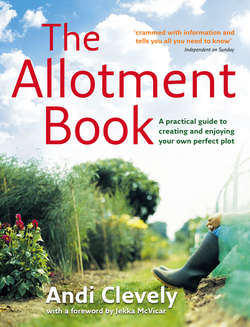Читать книгу The Allotment Book - Andi Clevely - Страница 45
Watering equipment
ОглавлениеChanging environmental conditions mean that conserving water is becoming a priority for many, and if you need to walk any distance with a full can of mains water, making the most of what is available can be imperative.
COLLECTING & STORING Rain is the obvious source of water, apart from the site tap, and you need to arrange ways to collect it for use during dry periods. Fit guttering and downpipes to all roofs and collect the water in a butt. If possible, attach an overflow to a second container, or direct surplus water to a nearby wildlife pond. To supplement the supply, run sloping lengths of guttering along fences and walls, and leave out buckets in rainy weather. Bring from home containers of ‘grey’ water (domestic waste from washing and bathing) and keep in a separate tank for watering permanent crops. Feed a pond with water from gullies, drains and overflows from water butts, and make sure it is deep enough for submerging a watering can. If the ground lies wet or waterlogged, lay drains leading to a pond or buried tank.
Water butts are often available from local authorities or discounted from the allotment site office. Substitutes include plastic dustbins, fruit barrels, old baths, discarded water tanks and cisterns and oil drums. Make sure you cover them with lids in dry weather to reduce evaporation.
SEE ALSO ▸ Making your own compost pages 116–17 Managing water pages 148–9 Fertilizers & feeding pages 150–1
